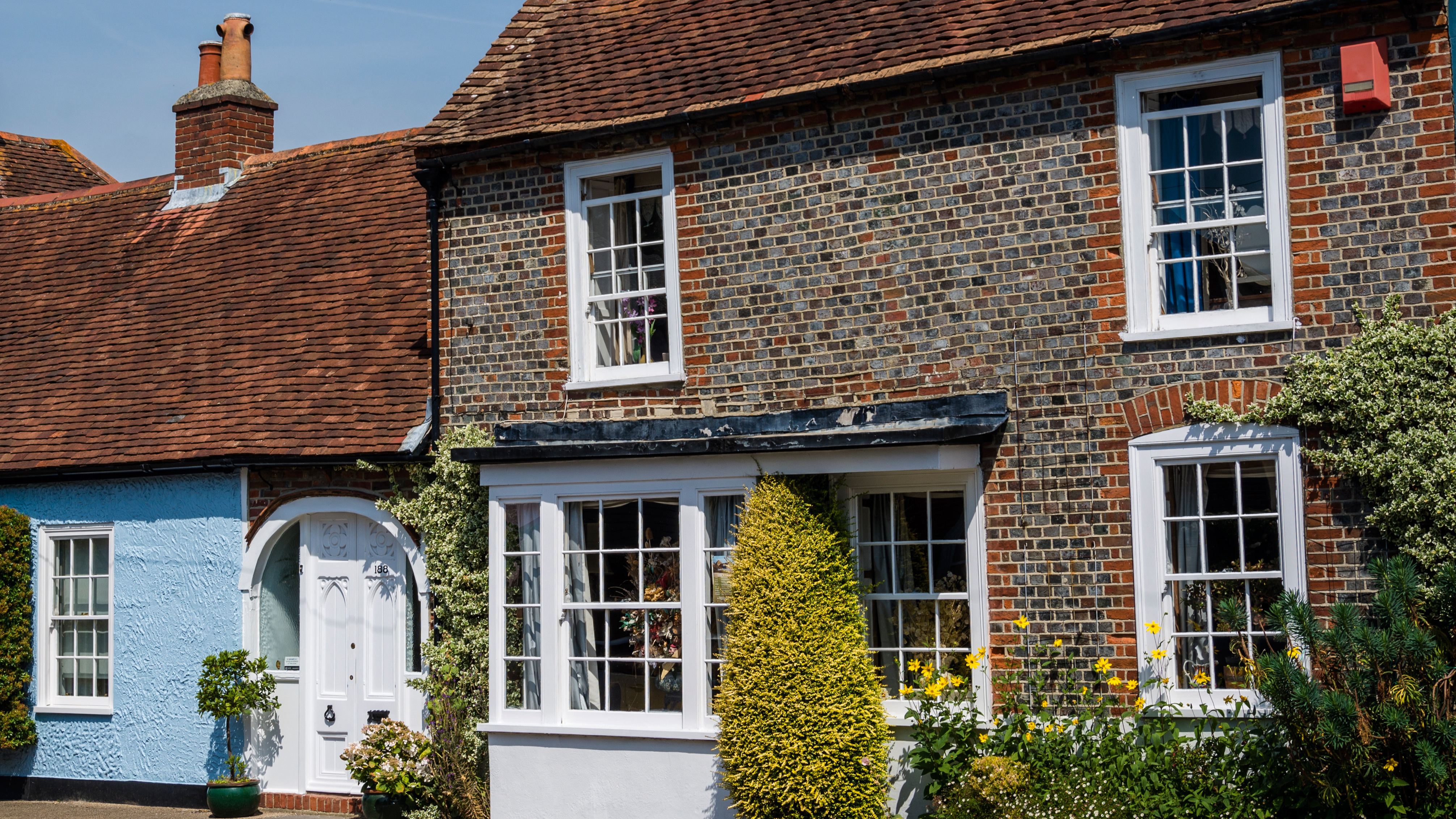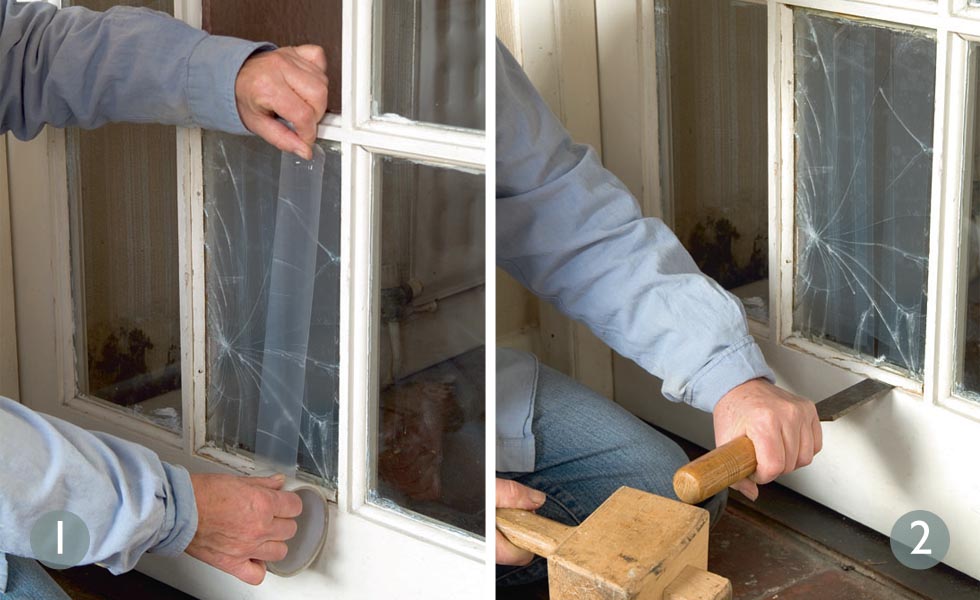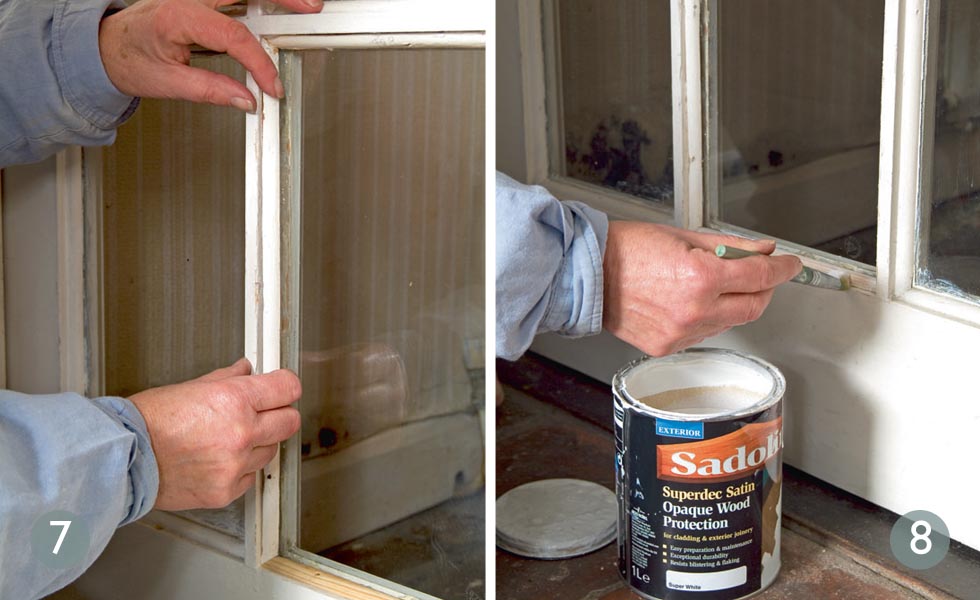How to replace broken glass
Breaking a pane of glass in a window or door is a hazard of restoration projects – if it happens, Helaine Clare shows how to replace a small pane safely and without too much trouble

Irksome it may be, but it’s not beyond the skills of a fairly practical person to replace a pane of broken glass in a window or door. It just needs a few everyday tools, a couple of hours of your time, and some precise measuring.
You will need:
- Newspaper or dust sheet
- Work gloves
- Goggles
- Knee pads
- Sticky tape
- Craft knife
- Mallet
- Old chisel
- Cardboard box
- Measuring tape
- Pane of toughened glass
- Clear flexible sealant
- Nails
- Beading
- Quadrant beading
- Primer, paint and brush
- Methylated spirits
Measuring glass for the pane
Houses settle over the years and door and window frames seldom remain ‘square’. When measuring up for the new pane, determine the height and width of the opening. For accuracy take the measurement from at least two points in each dimension; so when measuring across, hold the steel tape 5cm from the top and then again 5cm from the bottom.
Confirm the opening is square (that the corners are all right angles) by checking that the diagonals are equal. If your opening is not precisely square then it’s best to make a template out of card and identify and mark down any right angles.
If the pane of broken glass is small or awkwardly shaped (in a fanlight, for example), tape a piece of paper in place and rub a wax crayon around the edges. Cut the shape out and glue it to a piece of card. These are the ‘actual’ measurements – there must be an allowance of at least 3mm made for clearance. Check and recheck your measurements: glass is neither willing nor able to compromise. Either it fits, or it doesn’t.
1. Prepare the area

Cover the floor with an old newspaper or a dust sheet. Wear sturdy shoes, heavy-duty work gloves, goggles and knee pads as even tiny shards of broken glass can cause injury. Put lengths of sticky tape over the whole of the cracked glass pane to stop the broken pieces scattering when taken out. Keep children and animals well away.
2. Open up beading

Glass is usually held in place with wooden beading. Run a craft knife between the beading and the glass to break the old paint seal. Carefully, prise up the beading along each edge using an old chisel. If you ease the beading up gently, you will be able to reuse it without having to cut new beading to fit the space.
3. Remove glass
Place a cardboard box behind the pane. With a mallet tap firmly around the edges to remove the glass. Chip away old sealant and putty with a scraper or chisel and brush away debris from rebates. Measure the opening for the new glass. For safety, order toughened glass. This may take a couple of days to arrive.
Get small space home decor ideas, celeb inspiration, DIY tips and more, straight to your inbox!
4. Prime wooden frame
Any areas of bare wood should be primed; if not, linseed oil from the putty will be absorbed, making the wood less durable. After making sure the surface is clean, use a cartridge of clear flexible silicone sealant and, with a mastic gun, apply a generous strip along the face of the rebate where the new glass will be set.

5. Position glass safely
Put the new pane of glass into the frame so there is an equal gap all round. Press it against the rebate using equal pressure from both hands just around the edges. It’s important not to push the centre of the glass. If it tends to slide down, losing the gap at the bottom, tuck in some matchsticks to hold it in the correct position.
6. Fixing the beading
Tap a small nail top and bottom to hold the glass in place temporarily. If undamaged reuse the old beading. Alternatively, saw new wood to size using original pieces as templates. Prime the wood on all faces. Run another line of sealant into the rebate and carefully pin the short lengths of beading into position.

7. Pin glass into beading
It’s easy to split the beading as you nail it in place. Lessen the likelihood by blunting the points of the small nails by holding each pin upside down and knock the point with a hammer first. Fit the long pieces last. Bow the beading with both hands. Press the ends into the corners and allow the beading to spring in place.
8. Finish off
Use a centre punch to knock the pins just below the surface. Fill flush with wood filler. When dry, smooth with fine glasspaper. Match the surrounding wood using wood stain or a conventional primer, undercoat and top coat system. Use an old cloth dampened with methylated spirits to clean the new glass.